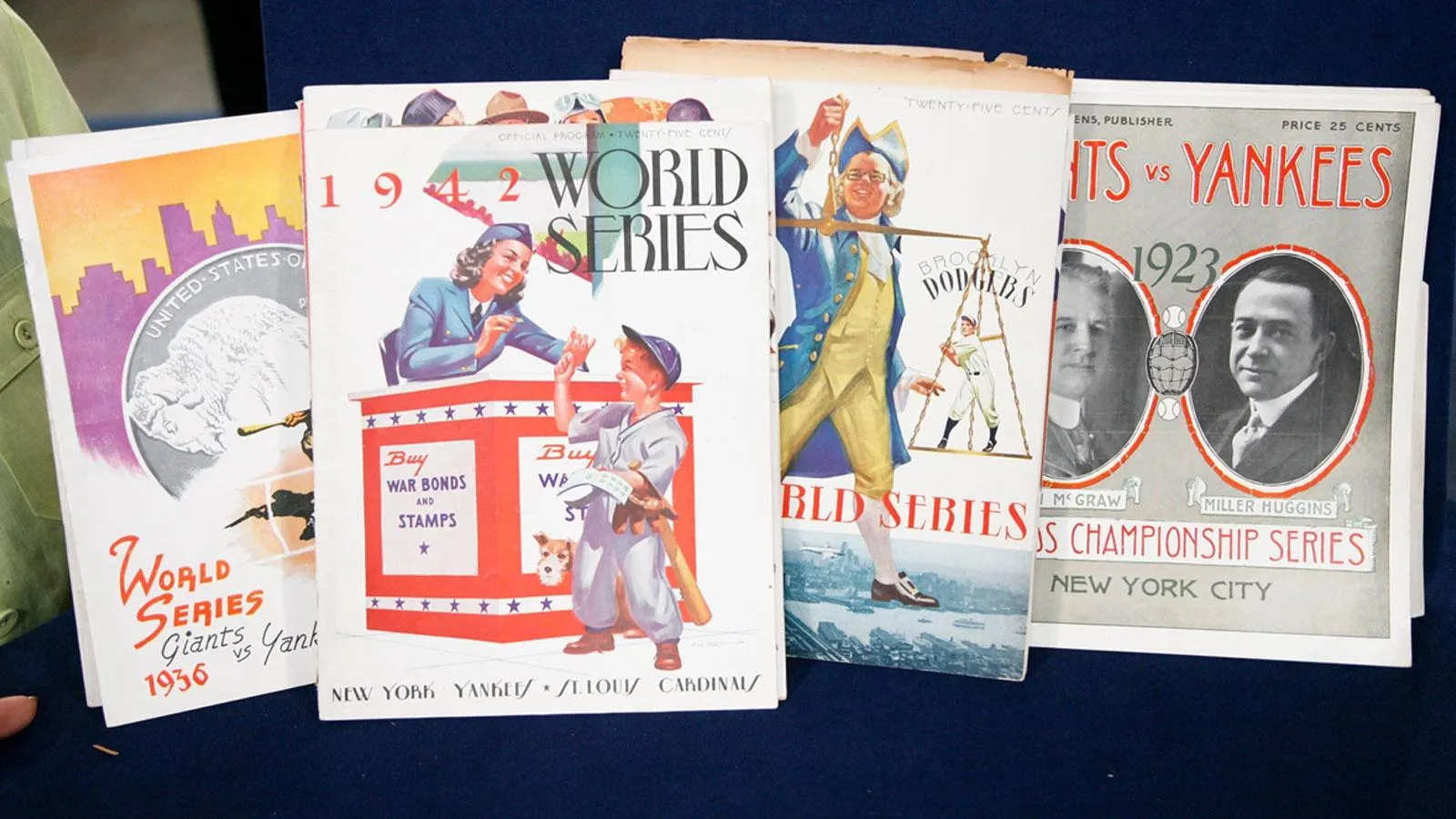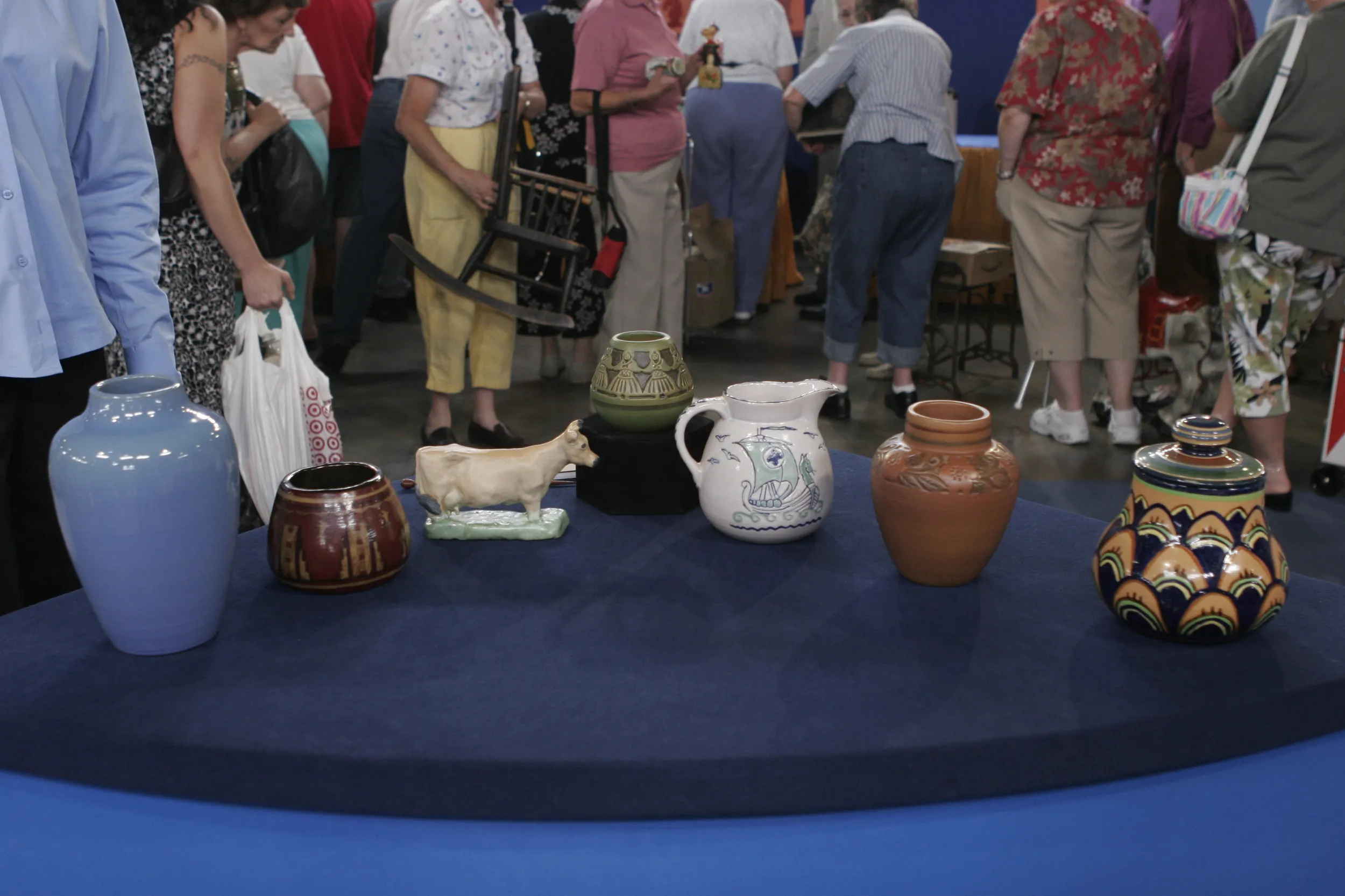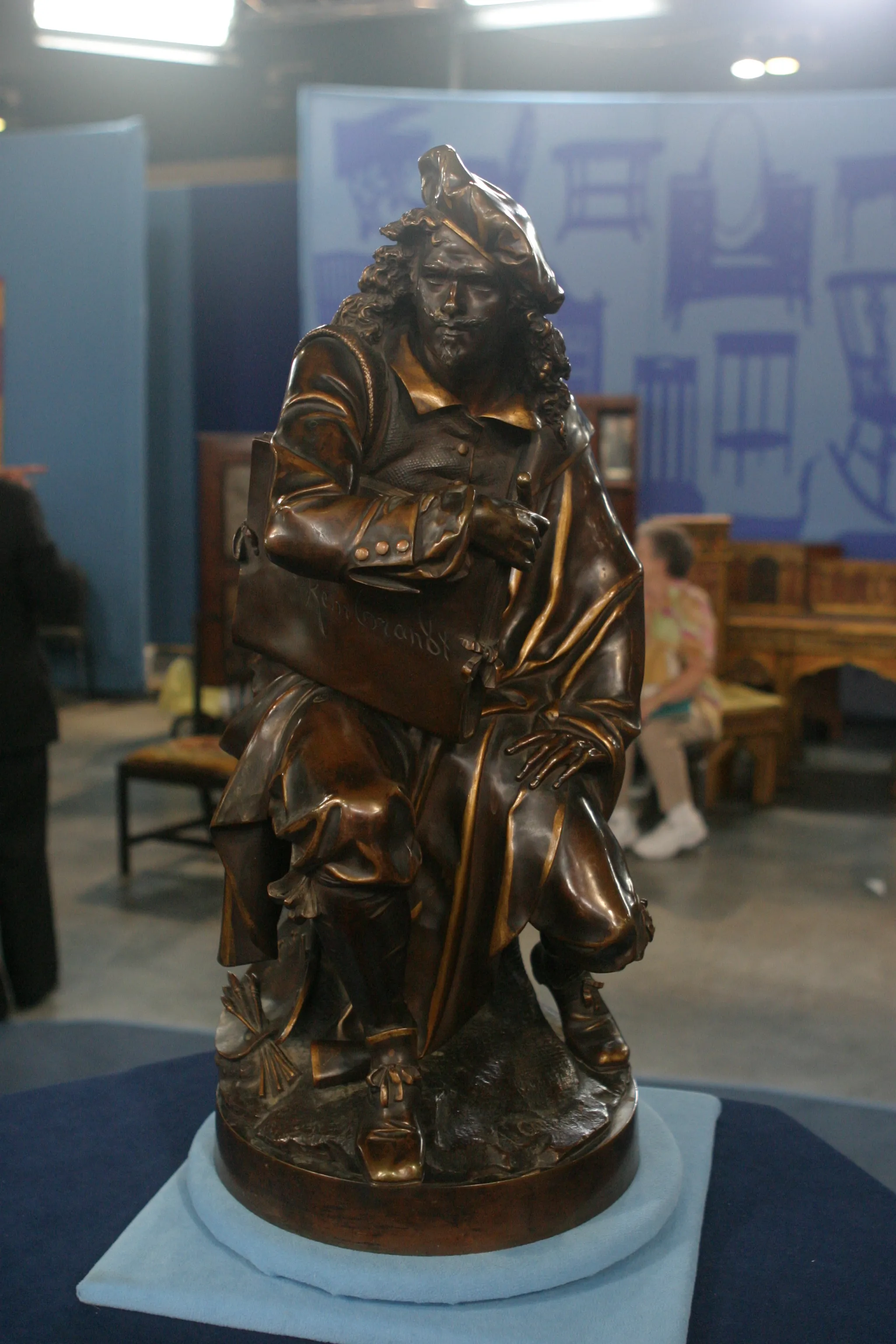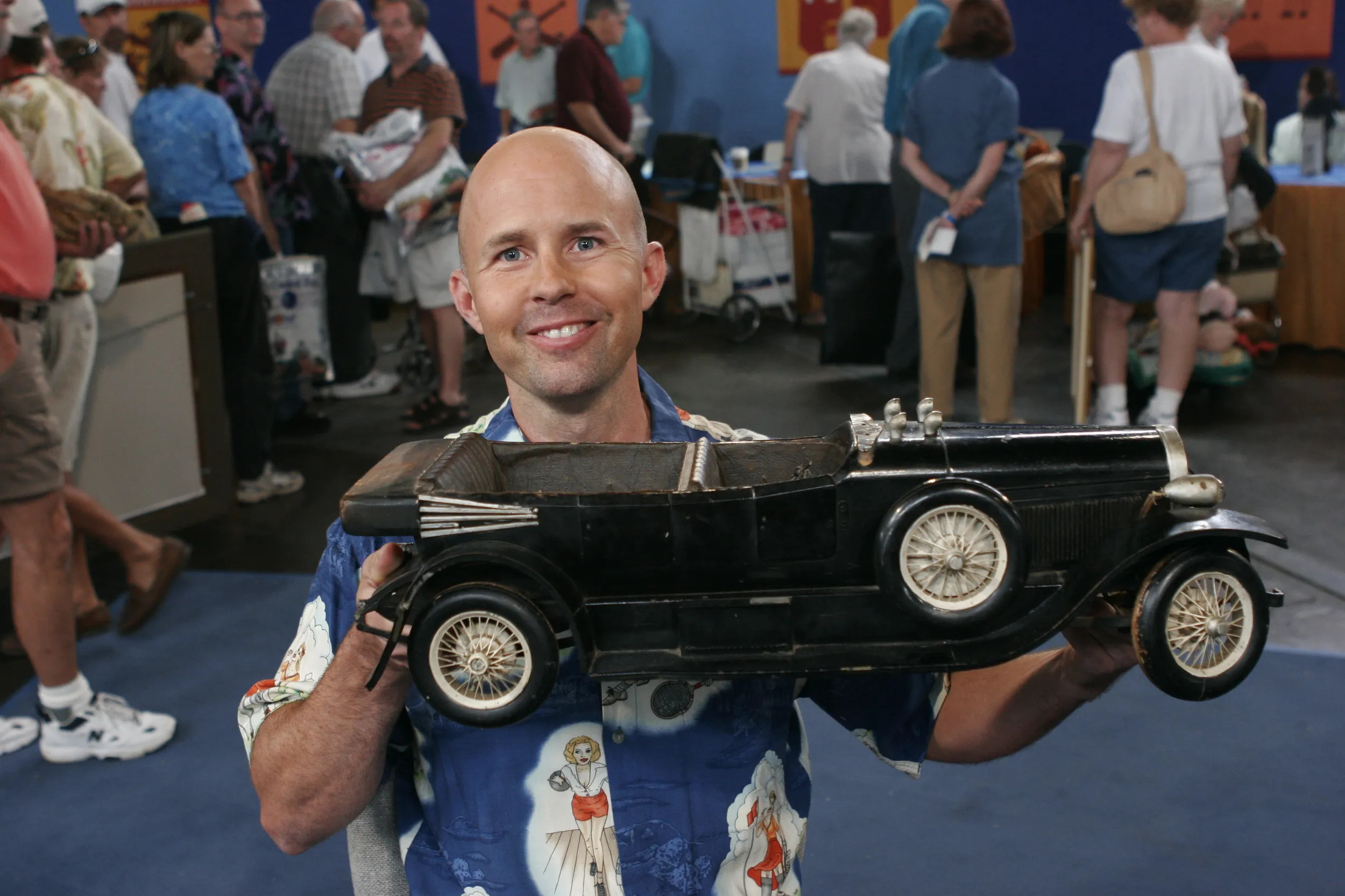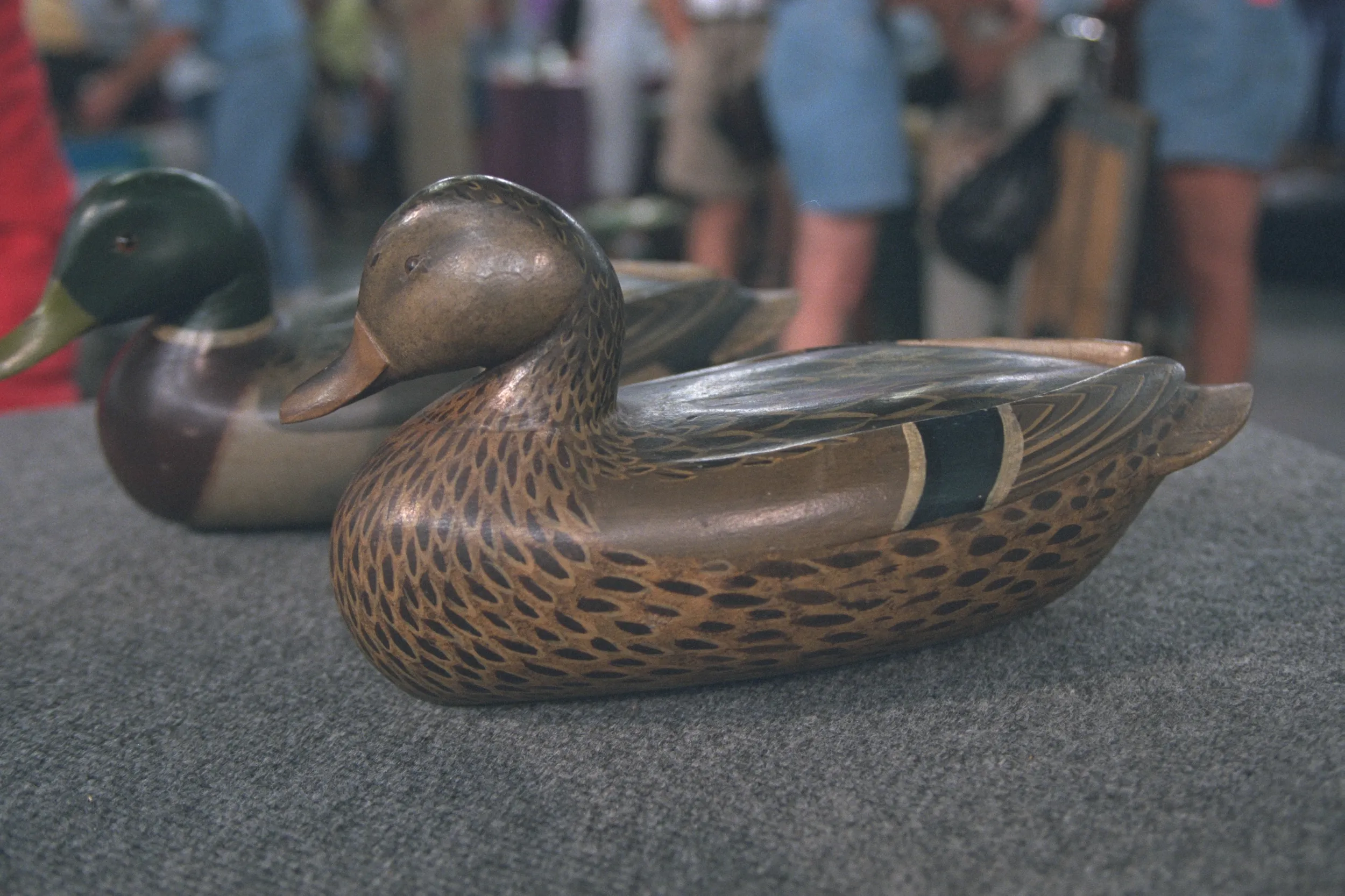GUEST: It belonged to my mom and dad, and I just, I've inherited it.
APPRAISER: Do you know anything about it?
GUEST: Well, in about the early '60s, I was teaching up in New Hampshire, and Mom and Dad came up to visit me and went antiquing. And Mom bought this up in New Hampshire. Northern New Hampshire. I'm not sure if she knew a whole lot, a lot about glass. She was always learning, and, and I think she thought it was something really wonderful.
APPRAISER: Well, it is pretty wonderful. It's a piece of Steuben.
GUEST: Ooh.
APPRAISER: And this was made in Corning, New York. I'm talking about the period of Steuben glass that was during the Frederick Carter era. And he was the man who ran the company starting in the early 1900s. And the, the first production was art glass, and made all kinds of different art glass, decorative pieces, that had different kinds of names. This piece was made in the late 1920s, and it's called Green Florentia. And the "Green" refers to the decoration in the middle. And the "Florentia" is the type of glass or the technique that was used to make it. What the bowl is comprised of is a fumed cased glass that has little glass particles that are encased between the layers of glass. And that's why you see those little speckles in it.
GUEST: Yes.
APPRAISER: Usually contained a design that looked like a flower. It came in a number of different colors. Some people would say that this was more of in the Art Nouveau period, but when I look at it, it's classical, it's stylized, and it has more of a geometric feel, like the Art Deco pieces that were being made at the time. Art glass was really a luxury item for most people. This wasn't something that you were serving things in.
GUEST: Mm-hmm.
APPRAISER: You were actually putting it out on your table as decoration. And it probably sold for, I'm sure, under $100.
GUEST: Is that right?
APPRAISER: Um, which still was a very substantial amount of money.
GUEST: Mm-hmm, oh, yeah.
APPRAISER: These pieces are fairly rare.
GUEST: Ooh, good.
APPRAISER: And we don't see very many of them. In fact, this is the first time I've ever seen one at an ANTIQUES ROADSHOW.
GUEST: Oh.
APPRAISER: Steuben is a very, very hot market, and a piece like this, if it were in a dealer's shop, could sell for anywhere from $5,000 to $7,000.
GUEST: Oh, wow. I'm sure my mom didn't pay that much, she was... She had an eye for...
APPRAISER: Oh, I kid. There's no way she paid that much, no.
GUEST: Not back in the '60s, no.
APPRAISER: No, not back in the '60s.
GUEST: Wow. Ooh, that's wonderful to hear, yeah.
APPRAISER: Well, thanks for bringing it in, it was a real treat.

